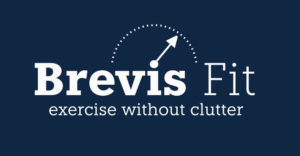Introduction
We will look at the concept of muscular strength. Big men hauling vehicles. Climbers climbing cliffs. Gymnasts doing amazing acrobatics with their body weight. Each of these feats is extraordinary. But the athletes need not only a lot of strength but also a lot of skill to achieve them.
When we do physical work, internal and external forces interact. Exercise differs from other physical activities by the interaction of these two forces. We need to control the external force to reduce fatigue in Weight Lifting. With Exercise, we need to generate a high amount of internal force to cause as much fatigue as possible. To avoid fatigue in the former, we need many technical skills. While in the latter, we need specific protocols to emphasize it. In that regard, Weight Lifting and Exercise are very different physical activities.
Internal versus External Force
Our muscles produce movements powered by muscular contractions. These contractions contract with a certain amount of force – contractile force. Our muscles can move our bones by their joints and ligaments through the generated force. The internal force is the force produced by muscular contractions. Yet, when we move around or lift things, we face an external force. Sara, for example, applies an external force to her bicep muscles when she does a dumbbell curl. The internal force on her arms must be greater than the external force imposed by the dumbbell to lift it. Yet, the external force is not only the gravity force of the dumbbell. The moment arm amplifies this: her forearm’s length and the current angle of her elbow joint.
When a 10kg dumbbell weighs 90kg
To avoid getting too bogged down in math, if Sara’s forearm is 35 cm long and she’s curling a 10 kg dumbbell (100N), she needs to generate roughly 900 N of internal force (equal to 90 kg) to keep the dumbbell leveled to the floor. At the beginning of the curl, her arm is stretched. There are no force demands because the moment arm equals 0. But, once Sara curls the dumbbell, the moment arm starts to increase. At a 45 degree angle, the force needs to reach around 500N and tops at the 90-degree angle reaching around 900N. The tension imposed on Sara’s biceps varies throughout the movement. It varies as she lifts the same weight.
Reaching the point of momentary muscular failure
As we mentioned in previous blog posts, Exercise aims to fatigue the muscles [1], [2]. It is fatigue that stimulates muscles to improve. What creates fatigue is intense muscular contractions. Intense muscle contractions occur when the applied force is near our max strength at that moment. Throughout Exercise, the strength of the working muscle is getting smaller. It will get smaller until it can’t handle the imposed external force. At that point, we cannot continue the exercise, unless we reduce the resistance used or we take a break. This point is called the point of momentary muscular failure.
The difference between weight lifting and Exercise
One of the goals of any activity is to improve. Exercise and weightlifting do not differ to that extent. The problem is, however, that we measure progress based on our success at overcoming the external force. Usually, we would say: Sara did 10 repetitions with 10 kg on the bicep curl exercise. Next week, she managed to do 11 repetitions with the same weight, so she made progress. Improvement from doing more repetitions might demonstrate an increase in Sarah’s muscular strength. But that is not the case if she changed the way she performed the exercise. In this regard, she might have altered her lifting technique, which made her endure the exercise longer. While this is good for weight lifting, it is not good for Exercise. For that, the best approach is to focus on generating internal force. And this is observed best by seeking muscular fatigue. Fatigue in our muscles accumulates with intense muscular contractions. Producing intense muscular contractions requires specific rules and guidelines. Constant tension, slow speed of movement, and partial repetitions, to name the most important.
The difference is in the mindset
Knowing the difference between Weight Lifting and Exercise will shift your mindset. We focus on internal force and fatigue rather than the exterior result. We focus on how much we lift in Weight Lifting. On we focus on creating a deep level of muscular fatigue in Exercise.
The goal of weight lifting – lift the weight
In Weight Lifting, the goal is to use as few local resources to complete a particular lift. The ratio between the internal and external force needs to be as big as possible. This means that little muscular force will be required to move a big external force. When muscles generate low internal force, fewer motor units get activated. This in turn accumulates less fatigue. With less fatigue, we can endure the activity longer. With respect to the muscles, the intensity level is reduced. This is good, for the purpose of extending our ability to continue the particular movement.
The goal of Exercise – fatigue the muscles
In Exercise, this is however contra-productive. When we reduce the intensity level, reaching muscular fatigue needs more work (sets, repetitions, more exercises, etc.). To increase efficiency and safety, we want to generate a large amount of internal force with the smallest amount of external force. This makes us reach a deeper level of fatigue without using a resistance we have trouble handling. With that, we can also focus on muscles, instead of on focusing on overcoming the resistance itself.
Easier is less productive and more destructive
In Weight Lifting, we try to use all the muscles available. It is to avoid deep fatigue and sticking points in a particular movement. We use body motion, inertia, and a fast movement speed to reduce the burden on specific muscles. This makes Weight Lifting more technical, coordinated, and strenuous on the joints. This increases the complexity and corresponds to higher injury rates. It also dilutes the focus on specific muscles. If we take the example from Sara doing the bicep curls with 10kg again. If Sara’s goal is to do more repetitions, she has many options available, such as:
Using other muscles to overcome the resistance
Sara could use body motion to generate momentum and use her lower body muscles. To help her complete a set, this would increase the movement speed. It will need a higher contractile tension at the beginning of the repetition. The rest of the way, however, the weight would come up on its own. Sara wouldn’t even need to hold the dumbbell. Yet, while Sara would complete the repetition, she would do nothing for her biceps. Her biceps wouldn’t need to engage much and thus wouldn’t improve. Her biceps would rest most of the time, except at the beginning of the movement. To accumulate some fatigue, Sara would need to do a lot of sets and different exercises. Those exercises are necessary to reach the minimum level of fatigue for muscular improvements. And in the meantime, she would also aggravate her joints.
Taking breaks between repetitions
The second thing Sara may do to increase her repetitions is rest between repetitions. Especially if her muscles get painful (lactic acid build-up, slower movement speed). Yet, this is again counterproductive. To reiterate, with Exercise, we seek the point of momentary muscular failure. If we take breaks between repetitions, this only prolongs the path towards that end goal. We need more repetitions, more sets, and more workouts to accumulate the same level of fatigue. But, if we strive for deep fatigue, we should seek the challenging parts of the movement and seek the discomfort. These are signs that we are nearing the point of muscular failure.
Increasing the speed of movement
The final thing that Sara could do is speed up the bicep curls’ execution. For instance, she would engage more at the beginning of the motion. And on the way down, she would not resist the gravity force of the dumbbell. This again breaks up the constant tension. Additionally, it makes for a weaker stimulus because of the so-called force-velocity curve. Customary muscles are stronger when they move slower (⅓ of their max speed) [3]. In this case, the concept of constant tension and contractile force is disrupted. In that regard, lifting fast makes our muscles produce less force and fatigue slower. Not the best recipe for bigger and stronger muscles.
Examples
The trainee demonstrates an example of shoulder press Exercise. The movement is slow and under controll, the tension on the muscle is constant throughout the movement, and she newer fully extends her joints to give her an oportunity to relax. The goals is to fatigue the muscles as efficiently as possible.
The trainee demonstrates the shoulder press in a weight lifting scenario. She uses fast movements, momentum and takes frequent breaks througout the set. The goal is to avoid fatigue in order to endure the resistance for as long as possible.
Conclusion
In this blog post, we discussed the difference between Weight Lifting and Exercise. We have established to seek fatigue first, before the performance. The idea of internal and external forces and how they work together is defined. External forces act on our muscles, demanding internal forces to control the movement.
In regards to that, we have established that correct Exercise differs in core from other physical activities. With Exercise, we focus on fatigue, i.e., generating as much internal force as possible. We focus on managing the external force imposed by machines, weights, or our own bodies in other activities.
Finally, we have argued for making Exercise harder, not easier. When we seek an easy way to overcome resistance, we reduce the quality of the Exercise stimulus.

